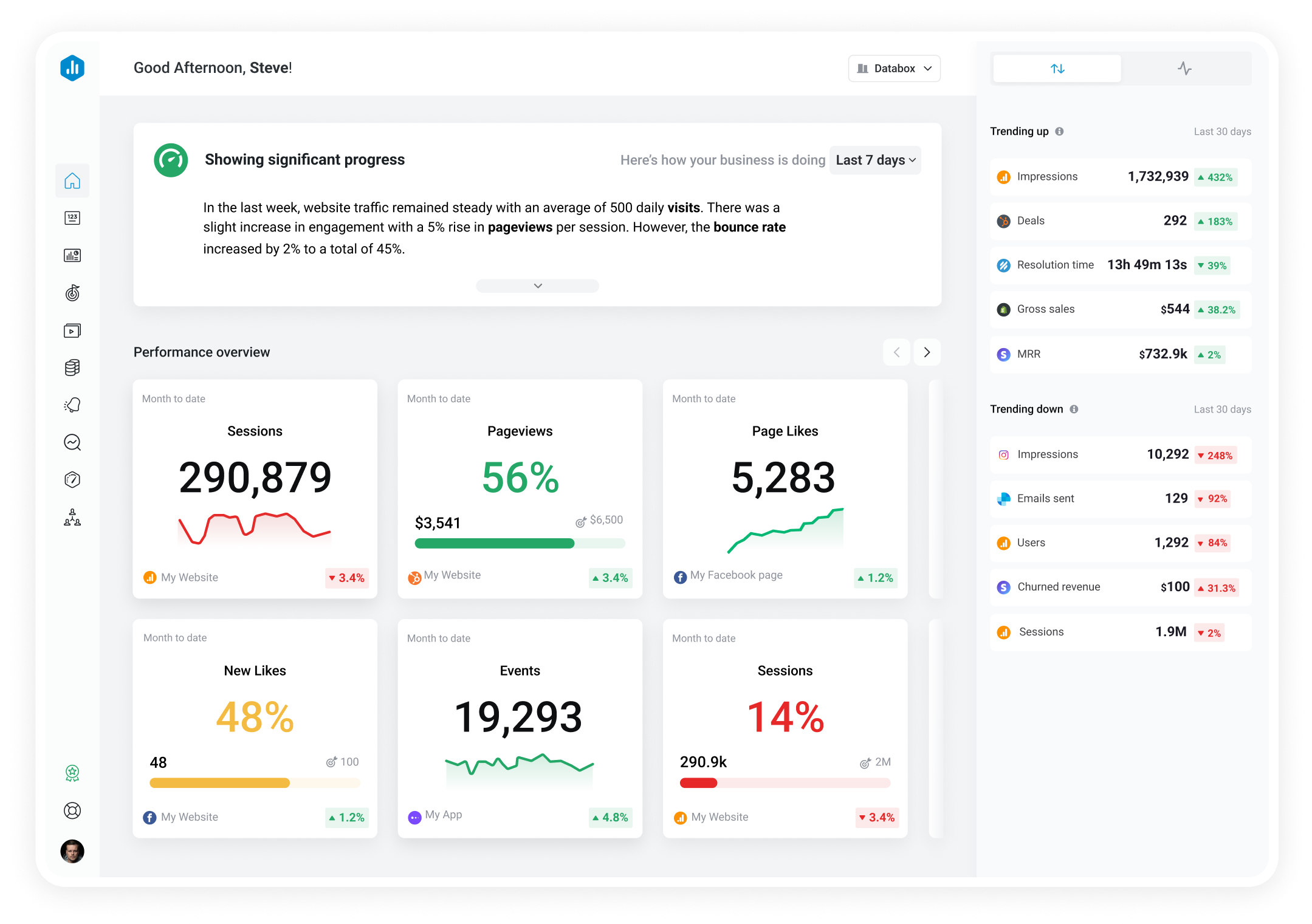Track all of your key business metrics from one screen
GET STARTED
 Xero
Fixed Assets by Asset
Xero
Fixed Assets by Asset The Fixed Assets by Asset metric in Xero provides a snapshot of a company's tangible assets, their net value, and how efficiently they are being utilized to generate revenue.
With Databox you can track all your metrics from various data sources in one place.

Used to show comparisons between values.
Databox is a business analytics software that allows you to track and visualize your most important metrics from any data source in one centralized platform.
To track Fixed Assets by Asset using Databox, follow these steps:
 Goals
Goals Scorecards
Scorecards Metric Digest
Metric Digest Metric Builder
Metric Builder Data Calculations
Data Calculations Performance Screen
Performance Screen